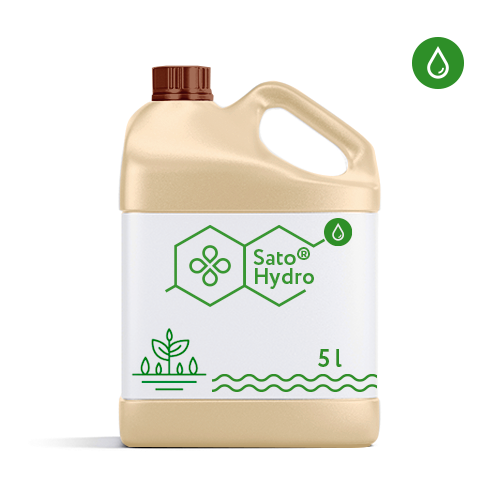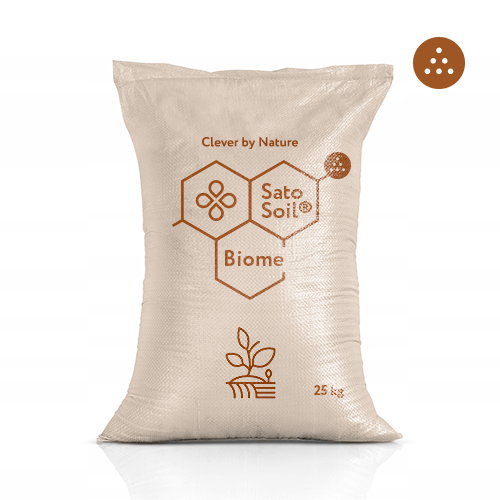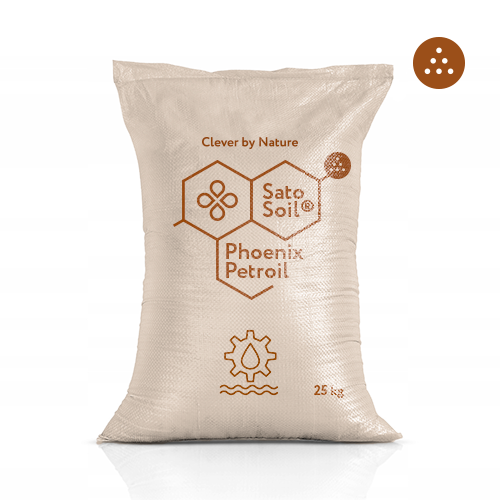Sato® Barrier
Sato® Barrier is a peat-sapropel mixture for disinfection and cleaning of surface and underground water bodies and coastal zones.
| Guaranteed composition | |
| Mass fraction of dry matter, % | ≥80,0 |
| Humic complex, g/kg | ≥220,0 |
| Mass fraction of humic acids, g/kg | ≥30 |
| Mass fraction of fulvic acids, g/kg | ≥180,0 |
| Total nitrogen (N), g/kg | ≥3,3 |
| Total phosphorus (P), g/kg | ≥1,8 |
| Total potassium (K), g/kg | ≥3,5 |
| Calcium CaO, g/kg | ≥2,5 |
| Magnesium MgO, g/kg | ≥0,4 |
| Iron (Fe), g/kg | ≥5,0 |
| Sulfur (S), g/kg | ≥1,0 |
| рН | 5,1 – 5,8 |
Following new trends in the field of groundwater treatment and rehabilitation of lands and water bodies as a result of accumulated damage, we developed our own permeable reaction barrier (PRB) that acts inside polluted water bodies and as a substrate on the banks adjacent to water reservoirs.
The task of such a reactive barrier is to retain pollutants through absorption and form insoluble complexes with heavy metals, nitrates, radionuclides, by this means preventing them from entering the soil and groundwater. Sato® Barrier uses a stable organic mass of lowland peat and sapropel with high porosity and neutralizing effect. After application of the formulation, the migration of pollutants in water and soil is significantly (from 70 to 100%) decreased due to the removal of nitrate ions and the effective absorption of radionuclides and salts of heavy metals.
Sato® Barrier has low desorption, i.e. it does not return absorbed harmful substances back into the water stream or into the soil. The product format is a soil mixture, which is used either along the contour of the main pollution, or fills the gate system (funnels) as the main reactive sorbent on the path of groundwater. Our specialists will help you define the reaction treatment zone based on water and soil studies for the presence of microorganisms and pollutants. If necessary, in order to increase the sorption capacity, it is possible to add other natural sorbents – zeolite or shungite.
Sato® Barrier doesn’t cut down its permeability, but its reactivity decreases over time. Close to industrial facilities and when rehabilitating lands, it’s important to systematically monitor soils and groundwater to maintain optimal results.
- has high sorption capacity;
- the compound is chemically and radiation resistant;
- does not have secondary waste;
- effectively restores coastal zones and reservoirs in places of accumulated damage (sludge storage facilities, quarries, waste incineration plants, pulp and paper, processing, chemical plants, etc.);
- in comparison with other technological cleaning methods (sparging and blowing, curing and thermoelectric treatment) has a low cost;
- allows combination with other cleaning methods – especially with rhizofiltration and phytostimulation.
Perimeter treatment or feeding of the coastline: mixing with disturbed or contaminated soils at the rate of 4 kg/m² to a depth of 16-20 cm.
Funnel and sluice system: contour placement of the reaction barrier, with or without the addition of local soils.






